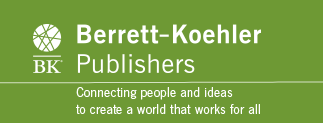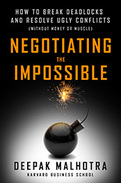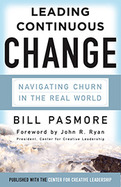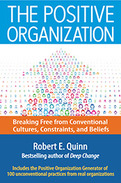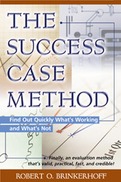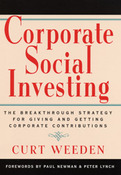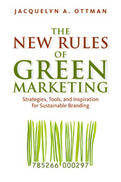Malhotra identifies three broad approaches for breaking deadlocks and resolving conflicts, and draws out scores of actionable lessons using behind-the-scenes stories of fascinating real-life negotiations, including drafting of the US Constitution, resolving the Cuban Missile Crisis, ending bitter disputes in the NFL and NHL, and beating the odds in complex business situations. But he also shows how these same principles and tactics can be applied in everyday life, whether you are making corporate deals, negotiating job offers, resolving business disputes, tackling obstacles in personal relationships, or even negotiating with children.
As Malhotra reminds us, regardless of the context or which issues are on the table, negotiation is always, fundamentally, about human interaction. No matter how high the stakes or how protracted the dispute, the object of negotiation is to engage with other human beings in a way that leads to better understandings and agreements. The principles and strategies in this book will help you do this more effectively in every situation.
The first step, Pasmore says, is to Discover which external pressures for change are the most necessary to address. The key here is to think fewer-step away from the buffet of possibilities and pinpoint the highest-impact options. Then you need to Decide how many change efforts your organization can handle. Here the mindset is to think scarcer-you have only so many people and so many resources, so how do you best use them? Once you've figured that out, it's time to Do-and here you want to think faster. Streamline processes and engage in rapid prototyping so you can learn quickly and cost-effectively. The last step is to Discern what worked and what didn't, so think smarter-develop metrics, identify trends, and make sure learnings are disseminated throughout the organization.
For each stage of the process, Pasmore offers detailed advice, practical tools, and real-world examples. This book is a comprehensive guide to navigating change the way it happens now.
The problem is that leaders are following a negative and constraining “mental map” that insists organizations must be rigid, top-down hierarchies and that the people in them are driven mainly by self-interest and fear. But leaders can adopt a different mental map, one where organizations are networks of fluid, evolving relationships and where people are motivated by a desire to grow, learn, and serve a larger goal. Using dozens of memorable stories, Quinn describes specific actions leaders can take to facilitate the emergence of this organizational culture—helping people gain a sense of purpose, engage in authentic conversations, see new possibilities, and sacrifice for the common good.
The book includes the Positive Organization Generator, a tool that provides 100 real-life practices from positive organizations and helps you reinvent them to fit your specific needs. With the POG you can identify and implement the practices that will have the greatest impact on your organization.
At its heart, the book helps leaders to see new possibilities that lie within the acknowledged realities of organizational life. It provides five keys for learning to be "bilingual"--speaking the conventional language of business as well as the language of the positive organization. When leaders can do this, they are able to make real and lasting change.
Because it seeks out the best stories of how real individuals have actually used innovations, The Success Case Method can ferret out success no matter how small or infrequent. It can salvage the few "gems" of success from a larger initiative that is not doing well or find out how to make a partially successful effort even more successful. The practical methods and tools in this book can help those who initiate and foster change, including leaders, executives, managers, consultants, training directors, and anyone else who is trying to make things work better in organizations get the greatest returns for their investments.
• Presents an evaluation method that is simple, practical, efficient, fast, extremely cost-effective, and produces compelling results
• Can answer virtually any organizational question, such as: Why is a new product launch faltering? Why are some managers losing staff, while others retain theirs? Is a pilot program ready to launch company-wide? Is a new training program accomplishing its goals?
• Proven effective in organizations ranging from Ford Motor to Gap International, Compaq, American Express, and the World Bank
• Uses real success stories that demonstrate the impact of new initiatives in ways that statistics can't
Each year, organizations spend millions of dollars trying out new innovations and improvements-and millions will be wasted if they can't quickly find out what's working and what is not. The Success Case Method offers a breakthrough evaluation technique that is easier, faster, and cheaper than competing approaches, and produces compelling evidence decision-makers can actually use.
Because it seeks out the best stories of how real individuals have actually used innovations, The Success Case Method can ferret out success no matter how small or infrequent. It can salvage the few "gems" of success from a larger initiative that is not doing well or find out how to make a partially successful effort even more successful. The practical methods and tools in this book can help those who initiate and foster change, including leaders, executives, managers, consultants, training directors, and anyone else who is trying to make things work better in organizations get the greatest returns for their investments.
Weeden's breakthrough plan, based on his innovative concept of corporate social investing, has the potential to dramatically change the way businesses and nonprofits interact. If widely implemented, it could substantially increase corporate support for nonprofits, turning the tide against cutbacks, offering profound benefits to businesses, and revitalizing the essential services nonprofits provide.
- Details a practical, 10-step plan that can create exciting new relationships between businesses and nonprofits
- Weeden's plan could generate an additional $3 billion a year in corporate support for vital causes, improving quality of life for millions, while at the same time bolstering corporate profits
- Offers essential advice for businesses planning their corporate social investing strategies and nonprofits seeking corporate support
Drawing on the latest poll data and incorporating lessons learned from her clients and other leading sustainable brands -- including GE, Nike, Method, Starbucks, Timberland, HP, NatureWorks, Procter & Gamble, Stonyfield Farm, and Wal-Mart -- Ottman provides practical strategies, tools, and inspiration for building every aspect of a credible value-based green marketing strategy. She covers such topics as spurring innovation through a proactive approach to sustainability, developing products that are green throughout their life cycle, communicating credibly to avoid accusations of "greenwashing," teaming up with stakeholders to maximize outreach to consumers, taking advantage of social media, and much more.
The New Rules of Green Marketing captures the best of Ottman's two previous groundbreaking books on green marketing and places it within a 21st Century context. Focusing on a new generation of marketers who likely grew up with an appreciation for sustainability, it provides in one place essential strategies, tools, and inspiration for connecting effectively with mainstream consumers.
-
By a trailblazing expert in green marketing
-
Demonstrates how to effectively market green to mainstream consumers
-
Filled with success stories from sustainability leader including Ottman's Fortune 500 and entrepreneurial clients
- Click Here for Press Release
Green products have been around since the 1970s, but it's only in recent years that they've become ubiquitous. That's because savvy green marketers are no longer targeting "deep green" consumers with a "save the planet" pitch. Instead, they're promoting the added value their products provide: better health, superior performance, good taste, or cost-effectiveness. In this innovative book Ottman argues that emphasizing primary benefits -- the New Rules -- is critical to winning over the mainstream consumer.
Drawing on the latest poll data and incorporating lessons learned from her clients and other leading sustainable brands -- including GE, Nike, Method, Starbucks, Timberland, HP, NatureWorks, Procter & Gamble, Stonyfield Farm, and Wal-Mart -- Ottman provides practical strategies, tools, and inspiration for building every aspect of a credible value-based green marketing strategy. She covers such topics as spurring innovation through a proactive approach to sustainability, developing products that are green throughout their life cycle, communicating credibly to avoid accusations of "greenwashing," teaming up with stakeholders to maximize outreach to consumers, taking advantage of social media, and much more.
The New Rules of Green Marketing captures the best of Ottman's two previous groundbreaking books on green marketing and places it within a 21st Century context. Focusing on a new generation of marketers who likely grew up with an appreciation for sustainability, it provides in one place essential strategies, tools, and inspiration for connecting effectively with mainstream consumers.
